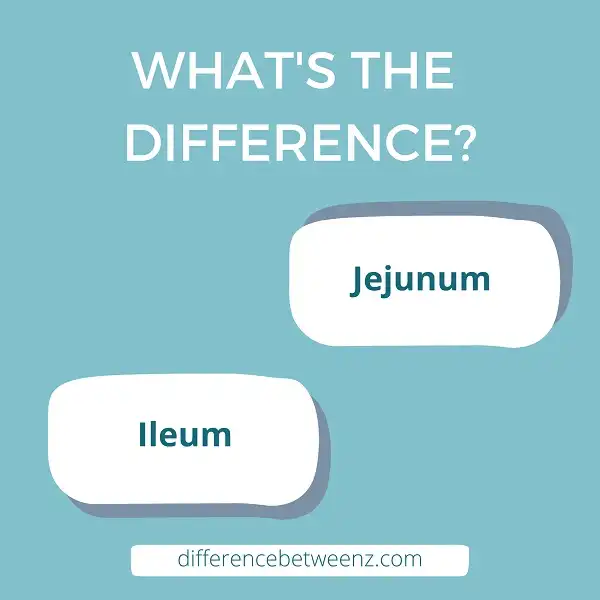The small intestine is made up of three sections: the duodenum, the jejunum, and the ileum. The jejunum and ileum are very similar, but there are some differences between them. This article will discuss those differences.
What is Jejunum?
The jejunum is the second section of the small intestine, located between the duodenum and ileum. It is about 2.5 meters long in an adult human. The jejunum’s primary function is to absorb nutrients from digested food. Jejunum contains more enzymes than the duodenum, which allows for better nutrient absorption. Jejunum also has a larger surface area than the duodenum due to its many folds and villi. Jejunum gets its name from the Latin word for “empty,” because it is often empty of food after a meal has been digested in the stomach and duodenum.
What is Ileum?
The ileum is the final section of the small intestine in mammals. It connects the jejunum, (the second section of the small intestine) to the cecum, (the first section of the large intestine.) The ileum is about 2.5 meters long in an adult human. The ileum absorbs vitamins B12 and B9 as well as fatty acids and other remaining nutrients from the food that has not been digested in the stomach or jejunum. Ileal surgery involves the removal of all or part of this section of the intestine. An ileostomy is a surgical procedure where an ileostomy opening is formed to bring the ileum to the surface of the body so that wastes can be eliminated into a bag or pouch placed over the stoma. Ileitis is inflammation of the ileum. Ileus is a mechanical obstruction of the intestines that can be caused by many things including surgery, hernias, inflammation, and tumors.
Difference between Jejunum and Ileum
The jejunum and Ileum are two sections of the small intestine. The jejunum is the upper part, and Ileum is the lower part. The jejunum is wider and shorter than Ileum. Jejunum has a thicker wall and more blood vessels than Ileum. The ileum has more lymphatic tissue than Jejunum. Jejunum absorbs nutrients such as carbohydrates, proteins, and fats. The ileum absorbs vitamins, minerals, and water. The jejunum is derived from the Latin word “jejunus” meaning “empty.” The ileum is derived from the Greek word “eilein” meaning “twisted coil.” The jejunum is about 2.5 meters long. The ileum is about 1 meter long. Jejunum makes up about 2/5 of the small intestine. The ileum makes up about 3/5 of the small intestine.
Conclusion
The ileum is the last part of the small intestine before it joins with the large intestine. It is responsible for absorbing water, minerals, and vitamins from food. The jejunum is located between the stomach and ileum and is responsible for most of the absorption of nutrients from food.


